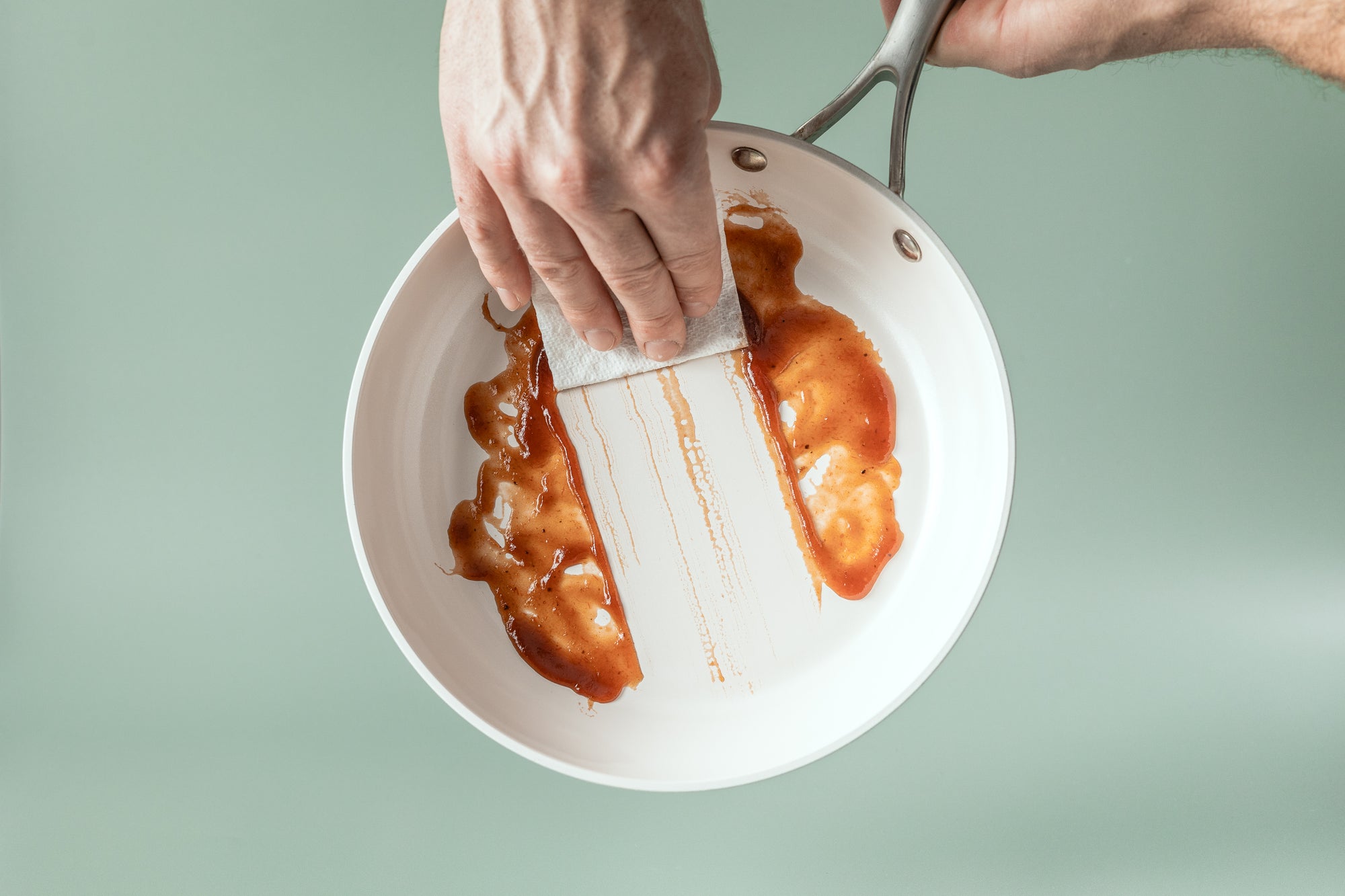What Is Stainless Steel Cookware?
Stainless steel is a mixture of different metals, including heat- and corrosion-resistant chromium and aluminum, which act as heat conductors in between layers of steel.
In terms of heat conductivity, stainless steel cookware heats up very quickly — much faster than anodized aluminum or aluminum cookware, making it the preferred choice for cooks. It also retains heat well, so it’ll continue cooking your food even when you turn off the burner.
Stainless steel tolerates up to 800°F of heat and is durable and long-lasting, if you take good care of it. However, cleaning can require a bit of time as leftover food may stick to the surface.
Although not known for its stick-resistant properties, stainless steel cookware doesn’t stick much if properly preheated and can be used as an alternative to a Dutch oven when sautéeing meat and making stock. Generally, uncoated stainless steel pots and pans are considered good all-around.
What Is Cast Iron Cookware?
Cast iron cookware includes dutch ovens, waffle irons, frying pans, griddles, crepe makers, deep fryers, and more, and is known for its durability, heat retention, and non-stick properties when cared for properly. They work well for baking, cooking stews, braising dishes, and making stir-fries.
Since cast-iron pots and pans are usually made of a single piece of metal, they can be used both on the stovetop and in the oven. It’s important to note that cast iron is a poor heat conductor when compared to copper and aluminum and can create uneven heating. It has a lower heat capacity than stainless steel but stores it longer. It should be cleaned gently with warm water and mild soap.
A downside of cast iron cookware is its potential for leaching dietary iron into food. According to an American Dietetic Association study, cast-iron cookware can leach significant amounts of dietary iron into food, meaning that people with an iron overload should avoid using this type of cookware.
What Is Ceramic Cookware?
Sturdy and beautiful, ceramic is a high-performance material that comes in different colors and is ideal for cookware. Not only is the material heat- and corrosion-resistant, but it’s also long-lasting if you care for it correctly. That means, only hand-wash your ceramic cookware with a non-abrasive sponge and never use metal kitchen utensils on it while cooking.
Ceramic cookware comes with a non-stick coating, which has a bad rep for being harmful to your health. While it may be true that the chemicals in Teflon cookware are toxic once exposed to high heat, the same isn’t true for ceramic cookware. In fact, it’s an all-natural alternative without any toxic ingredients, making it 100% safe for your health.
In addition, ceramic is very versatile and can be used for a variety of dishes, including pan-searing meat, slow-cooking stews, and baking casseroles.
Ceramic, Cast Iron, Stainless Steel — Which One Is Better?
Now that you’ve read an overview of some of the main types of cookware, it’s time to decide which one is best for you. Learn how they compare in terms of cooking, cleaning, and toxicity.
1. Cooking
While stainless steel and cast iron are both poor heat conductors, ceramic cookware heats quickly and evenly. That means it works well for cooking thick cuts of meat without running the risk of burning your food. Our cooking category winner: ceramic cookware.
2. Cleaning
Ceramic cookware requires gentle cleaning with a non-abrasive sponge, mild soap, and lukewarm water. However, it’s much easier to clean than cast iron cookware and perfect for easy maintenance in family kitchens. Stainless steel can take a while to clean as you may have to scrub off food leftovers that stick to its surface. Our cleaning category winner: ceramic cookware.
3. Toxicity
While ceramic cookware and stainless steel are both toxic-free and don’t have the same harmful chemicals found in Teflon, you’ll still have to be careful when shopping for stainless steel pots and pans.
Stainless steel sometimes features a non-stick coating, which can be toxic. Therefore, if you buy this type of cookware, check its four-digit code assigned by The Society of Automotive Engineers (SAE) to ensure it’s pure stainless steel.
As for cast iron, we’ve already mentioned before that it may leach dietary iron into food so people with high iron levels should avoid using it. Our non-toxic cookware winner: ceramic cookware.
Final Thoughts
As you can see, our clear winner is ceramic cookware. Not only is it all-natural and features a non-toxic coating free of PTFE (Polytetrafluoroethylene), it’s safe to use on induction, gas, and electric stoves, can withstand up to 550°F of heat, and is perfect for everyday cooking. Start cooking healthily today with our Yatoshi Nonstick Ceramic Cookware Set, which includes a 6.5qt Dutch oven, 5qt sauté pan, 3qt saucepans, and a 10” frying pan!



